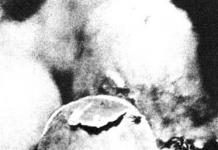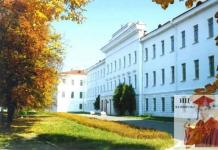Fig or fig tree is a deciduous plant that belongs to the Mulberry family. Its homeland is the Mediterranean. In the Crimea, Carpathians, Central Asia and the Caucasus, figs are grown in open ground as a valuable cultivated plant that produces fruit - wine berries. The fig tree is also common in indoor floriculture. With proper care, it acquires a decorative appearance and can bear fruit twice a year.
- seeds;
- cuttings;
- root shoots.
- the pot is scalded with boiling water and a drainage layer 3–4 cm thick is placed on its bottom;
- the plant is transferred to a new container without violating the integrity of the old earthen clod;
- the voids are filled with fertile soil, but the root collar cannot be buried.
Show all
Description
Figs are a dioecious plant in which female inflorescences grow on some trees (figs) and male flowers on others (caprifigas). Female plants bloom with pistillate flowers, after which edible fruits are formed, and male representatives produce two types of flowers: staminate and pistillate. The former are necessary for pollination, while the latter produce inedible fruits. Small wasps, blastophages, living in male flowers are responsible for pollination.
With proper care, a fig tree can bear fruit every year.
Dioecious species are not suitable for growing at home, since pollination is impossible. For this purpose, special self-fertile varieties have been bred that form female inflorescences and are capable of setting fruit without pollination. In winter, figs shed their leaves. The leaf blades are large, fleshy, entire or palmately dissected, broadly ovate in shape. Figs are a light-loving plant, drought-resistant, undemanding to soil composition and can grow even in acidic soils. A powerful root system penetrates deep into the soil.
Reproduction methods
Indoor figs are propagated:
Most often, figs are grown using cuttings, and fruiting occurs after 2–3 years. If the plant is grown from seeds, the harvest is harvested in the 5th–6th year. Propagation by root shoots at home is very rarely practiced, since there is a high probability of injury to the root system and death of the tree.

Growing from seeds
Fig seeds germinate for two years. When planting, pay special attention to the composition of the soil. The tree grows well in light soil with a high content of humic acids. But an excessive amount of carbonates negatively affects the growth and development of the plant.
To prepare the soil, take equal amounts of humus and coarse sand. You can also use a soil mixture of humus, peat and sand. A layer of drainage is placed at the bottom of the planting pots and 2–3 grains are sown in each. Subsequently, the strongest plant is selected from the emerging seedlings.

Growing figs in a pot
The seeds are sown shallowly, after which the containers are covered with polyethylene. For their germination, a temperature of +24...+27 degrees is required. The first shoots appear after 2–4 weeks. The cover is removed and the crops are thinned out. When the seedlings develop two pairs of true leaves, they are planted in separate containers.

Cuttings
To grow figs from cuttings at home, you need to prepare the material. This is done in the middle of winter, when the plant sheds its leaves and enters a dormant period. For cuttings, it is best to use the central parts of branches from an adult fruit-bearing plant over five years old. The branches must be mature. Each segment should be 15 cm long with three to four internodes. At the bottom, the cut is made obliquely, 2 cm below the last bud, and at the top – in a straight line. The cuttings are kept in a cool, dry place for several hours until the juice stops secreting. Then longitudinal scratches are made on the lower part to destroy the upper layer of bark down to the cambium. Thanks to this procedure, a powerful root system is formed. After this, the segments are placed in a biostimulator solution for some time.
To plant cuttings, prepare containers. A drainage layer of pebbles and expanded clay is laid at the bottom, then loose fertile soil is poured in a layer of 7 cm, and then sand is added in a layer of 4 cm. It is moistened and holes are made in it. The cuttings are removed from the stimulator, washed with running water, the lower sections are dusted with ash and placed in the soil. The containers are covered with a transparent bag or sand and placed in a well-lit place. In cloudy weather, additional lighting is used.
To ensure that the cuttings take root well, maintain the temperature within +23...+26 degrees. The roots appear after 1.5 months, during which the seedlings are ventilated and the sand is moistened. When they get stronger and adapt, they are transplanted into flower pots, which are filled with fertile soil mixture. After 2 weeks, young plants are fed with complex fertilizers for indoor crops.
Care
Caring for figs at home is easy. He loves sunny places very much. With a lack of light, it develops poorly, and the fruits do not have time to ripen.
In summer, the crown of the tree is sprayed every day with warm water and the soil is watered abundantly. Even if the earthen clod dries out slightly, the figs begin to shed their leaves. During fruiting, the amount of watering is reduced, otherwise the fruits will be watery and insipid.
In winter, the plant enters a dormant period. At this time, he is taken to a glassed-in loggia, veranda or other room with a temperature of +10...+14 degrees. Figs do not need light or fertilizing during the rest period. It needs to be watered sparingly and rarely. The main thing is that the earthen lump does not dry out.
In order not to awaken the buds prematurely, cool water is used for irrigation.
Figs begin to be fed after the first buds swell. To do this, use mullein diluted with water. After 2 weeks, a solution of phosphorus fertilizers is added to the soil. During the growing season, the fig tree is fed every 2 weeks, alternating mineral and organic compounds.
Transfer
Since the roots of figs grow very quickly, they need to be replanted every spring before the leaves bloom. Adult plants older than 7 years are replanted every 3 years, and the new pot should be several centimeters larger than the previous one. Too spacious a container promotes increased root growth, which leads to a decrease in yield.
The procedure is carried out as follows:
The transplanted tree is watered with plenty of water and placed in a well-lit place.
Crown formation
In order for figs to fully develop, they must be pruned in a timely manner. Without crown formation, the plant eventually grows into a large tree, which is very inconvenient for an enclosed space. Pruning is carried out before the buds begin to swell. Young plants are left with 3–4 healthy shoots. When the tree reaches a height of 25–35 cm, the crown is pinched. This stimulates the development of side shoots.
In order for the lower branches to become stronger and more powerful in the future, the shoots of the upper tier should be shortened by 1/3. Proper pruning allows you to get a beautiful lush crown, consisting of 3-4 vertical shoots of the main order and a large number of lateral branches.
There is another pruning option that gives the crown a fan shape. It is necessary to pinch the apical bud and remove the branches directed into the crown. The main shoots should be horizontal and parallel to each other in relation to the plane. Thanks to fan pruning, the number of fruiting shoots increases several times, and the tree looks very attractive.
Figs can get coral spot disease. The disease manifests itself as small red formations on the shoots of the tree. As a treatment, the affected areas are cut out, healthy parts are sprayed with a strong solution of potassium permanganate or fungicides.
Figs in Stavropol region
Since figs are native to the tropics, it is quite difficult to grow them in the open ground in the middle zone. Even in the Stavropol region this is not easy to do. It must be planted on the south side of the site. Having planted it on the site, it must be covered for the winter.
To do this, the bush is tied in a bundle with rope in the fall and bent tightly to the ground. A load is placed on top for a week. During this time, the plant gets used to being in this position and begins to press itself to the ground. Then it is covered with tomato tops or corn stalks, and covered with fertilizer bags on top. Figs under such shelter can withstand frosts down to -25 degrees.
The article describes in detail the correct planting of figs and subsequent care for them. You will learn how to grow and propagate this wonderful plant on your site or indoors. We have selected photos of varieties to make it easier to choose figs suitable for specific conditions.
Varieties and varieties of fig trees
Figs (fig tree or fig tree) have been cultivated since ancient times. Over the entire history of cultivation, many varieties and varieties have been developed. There are self-fertile (parthenocarpic) and cross-pollinated forms. Self-pollinating varieties are recommended for cultivation in temperate latitudes. Figs are also divided according to the purpose of use:
- Use fresh.
- Recycling.
- Obtaining dried fruits.
Fig fruits of different varieties
You definitely need to pay attention to whether the plant is zoned for a specific region and how it reacts to low temperatures. In addition, varietal figs are distinguished by the following characteristics:
- fruit density;
- taste qualities;
- productivity;
- ripening time;
- possibility of transportation;
- winter hardiness.
Popular varieties:
Planting figs in open ground and in pots
The plant's homeland is the subtropics; growing a fruit-bearing tree in the middle zone will require a serious approach. You should choose a well-lit place, protected from northern winds. The southern side of a slope or building is suitable; the crop tolerates heat well. Figs are undemanding in terms of soil composition, but need moisture. A drainage device at the bottom of the planting pit is required only on heavy clay soils. The substrate is filled with organic matter and poured in the form of a mound. The roots of the seedling are placed on the formed cone, straightened and covered with earth. The root collar must be above the soil level.
Young fig
Before planting, the root system is dipped into a manure-clay mash. In regions with harsh winters, it is recommended to plant figs in trenches. The north side of such a landing trench should be vertical. It is protected from shedding with film or polycarbonate. The southern slope is gentle, providing access to the sun's rays. Both autumn and spring planting in open ground is practiced. Even if you select a winter-hardy variety, you need to take care of its preservation in winter. Figs require shelter or moving indoors (greenhouse).
Attention. The ability of figs to grow even in the most depleted soils has been widely described. There are cases when a fig tree successfully developed among rocks or on the roofs of buildings. Even in such cramped conditions, the plants bear fruit.
You can grow figs at home in a tub, where they will grow up to 2 meters in height. The first three years of the plant's life require annual replanting, preferably in December. The container is gradually increased, bringing its diameter to approximately 0.5 m. A drainage layer is placed at the bottom of the pot. The plant feels good on a glassed-in loggia. In November, the tree will shed its leaves and go into a dormant period. At this time, they hardly water it and try to create cool conditions. You should definitely opt for self-fertile varieties. With good care, 2 fruitings are achieved - in June and September. In the summer, it is useful to place potted figs outdoors.
Figs grow well and bear fruit in an apartment or winter garden
Plant care, fertilizers and fertilizing
The culture needs regular watering. Pruning the crown will help increase yield. In temperate climates, figs are shaped like a bush or fan. This increases its winter hardiness and makes covering work easier. It is necessary to periodically loosen the tree trunk space; mulching is recommended.
The culture is responsive to fertilizing. They are held monthly. In spring, nitrogen and phosphorus-potassium fertilizers are applied. During the growing season, humus (30-40 g per bush). Superphosphate (300-500 g) and potassium salt (150-300 g).
The plant responds well to soil mulching
Nitrogen-containing substances are fed a second time in June. Be sure to cover the plants for the winter when the first frost occurs. The bushes are placed in furrows 40 cm deep and pinned down. The top is covered with plant material – leaves, spruce branches. Next, pour a layer of earth about 20 cm. In harsh conditions, put boards, roofing felt and other available materials on top.
Caring for indoor figs involves transplanting. Water, trying to prevent the earthen clod from drying out completely. The crown is periodically sprayed. Feed potted figs monthly. Liquid universal complex fertilizers.
Advice. Growing a savory tree at home, in a pot, has been practiced since the 16th century. By selecting low-growing parthenocarpic varieties, you can get a harvest 2 times a year. The quality of the fruit is not inferior to garden figs.
Fig tree propagation
The following methods of fig propagation are practiced:
- seed;
- layering;
- cuttings;
- root shoot.
The seed method is used mainly by breeders and nurseries. The most popular way is cuttings. Rooting is carried out in January-February. Cuttings are best prepared from annual shoots 15-20 cm long; they are not cut, but broken off. A heel is formed (a piece of the mother plant at the breaking point) on which the most roots will appear. Cuttings from the middle and lower parts of the shoot take root better.
Fig cuttings
Planted so that about 6 cm remains on the surface. For private propagation, you can root it in a cut plastic bottle, making holes in it for drainage. The container with the cuttings is placed in a warm place (for example, on a windowsill above a radiator). After rooting and the appearance of leaves, hardening is carried out and transplanted to a permanent place. Fertilizing with nitrogen fertilizers is necessary.
Pest diseases
In temperate climates, figs are disease resistant, but coral spotting may sometimes occur. This is a rare fungal disease that is difficult to treat. The plant weakens and gradually dries out. In wet weather, bright red-orange spots appear on the bark of the trunk and branches. At the first signs of disease, infected branches are removed and treated with fungicides. If measures are not taken on time or conditions are favorable for the spread of infection and it cannot be stopped, the affected plant will have to be cut down. Bacteriosis may also appear, leading to drying of shoots and shedding of fruits.
Rust damage
Damage can be caused by aphids, moth caterpillars, and mealybugs. In indoor conditions, figs are affected by spider mites. In the initial stage of propagation, washing the plants with cold water helps. But in the event of a pest invasion, it is necessary to use insecticides, for example, actelik.
Figs will not only provide tasty and healthy fruits, but will also decorate your garden or home space. Its leaves are divided into 3-5 lobes and are very decorative. The fig tree is the most valuable fruit crop; it will become the pride of the gardener who managed to grow it.
Growing figs in the winter garden: video
It is assumed that the fig (fig tree, fig tree) is the most ancient cultivated plant. In the 16th century, figs began to be grown not only in open ground, but also as a potted crop. Low-growing varieties have been bred that do not require pollination by insects, which means that anyone can get a tasty and healthy fruit right on their windowsill. The plant does not require special care, but it is still worth considering the fact that figs are native to the subtropics, and they need appropriate conditions.
Preparing to plant figs at home
The fig tree can be propagated by both cuttings and seeds. Successful cultivation of figs at home largely depends on the quality of planting material, which is why special attention should be paid to its selection.
Selection and preparation of planting material
A fig tree grown by cuttings will begin to bear fruit much earlier than that obtained from seeds. If there is an adult mother tree, you can prepare cuttings for planting yourself. If not, you can purchase seedlings. To prepare seeds (fig seeds) for planting, they are washed well in a fine mesh sieve and dried on a napkin. Only fully ripened fruits are suitable for these purposes. Within a day, the seeds are ready for sowing. A fig grown from seeds will begin to bear fruit no earlier than the fifth year of life.
Landing dates
You can also harvest cuttings in the fall (before the plant begins its dormant period), but then they will have to be kept in damp sand in a cool, dark place for three months. If you carry out cuttings in January, then already next month the branches will be ready for planting in a pot.

Seed propagation is carried out at the same time, with the only expectation that the seeds will require additional time to hatch. Pre-soaked seeds are ready for planting in the substrate after 3 days. After about 10 days, the sprout will reach 3 cm (the growth rate largely depends on temperature, watering, and soil quality).
Choosing a place in the house
Before you buy fig tree seedlings, you should think about whether there is a suitable place in the house for the plant. Despite the fact that the indoor fig was bred to be adapted for living at home, it will require a well-lit room (southern exposure), and an adult specimen will need space. The possibility of placing the tree in the fresh air will have a beneficial effect on the health of the plant, accelerating its growth and the quality of fruiting. That is why it is recommended to take the pot of figs to the balcony or garden at the beginning of spring, as soon as the air temperature warms up to 15°C.
It is allowed to grow figs in a country house or garden plot. As practice shows, the fig tree winters quite well in our climate, but it must be covered for the winter. For example, in Stavropol, figs thrive in southern areas protected from draft winds, but bear fruit once a year. The weather conditions of this region do not allow the second wave of harvest to ripen. However, this does not upset gardeners, since even from the first wave you can collect several kilograms of vitamin-rich fruits.

In Ukraine, figs grow mostly in Odessa, but they also manage to bear the harvest only once. The berries that set by the end of summer usually do not have time to ripen.
Choosing a pot and preparing the soil mixture
The fig tree is not picky about soil composition, but grows best in vegetable soil with the addition of peat and ash. It is useful to enrich the substrate with crushed eggshells, which are doused with boiling water before drying. Highly saline and clayey soil is absolutely not suitable for figs.
Before planting the plant, it is recommended to steam the soil and pour boiling water over the pot.
Flat bowls are not suitable for planting figs, and tubs that are too deep are also not suitable. For a young plant (stage of growing cuttings), pots with a volume of about 1 liter are optimal. Every year the container size should be replaced with a larger one. A drainage system must be provided in the home tub.
Planting figs
It is necessary to plant a fig tree in early spring so that it has time to take root well and adapt before the end of summer. For a fig tree grown from a cutting, the first fruits appear no earlier than the second year of life.
Rules for caring for figs at home
Figs are not a capricious crop; they can even adapt to life in a dry climate and poor soil. But if we talk about the proper cultivation of this plant, there are some rules that should be followed.

Watering frequency and water quality requirements
The fig tree loves soft, settled water at room temperature or a little warmer. The frequency of watering depends on the season and room temperature. In summer, the plant should be provided with frequent, abundant watering; it is best to do this every other day. You need to water so that the liquid passes through the soil and comes out through the drainage holes of the pot. The water should thoroughly moisten the entire substrate.
Closer to the tree's dormant period (October-November), watering is reduced. Now the soil is moistened approximately once every four days. Once the figs have shed all their leaves, they are ready to be placed in a cool, dark place until next year. Now care consists only of not letting the soil dry out completely. The soil in the pot must be moistened with cool water.
Selection and timing of fertilizing
It is advisable to feed the plant that has awakened after hibernation. As soon as the buds begin to swell, it’s time to apply phosphorus and nitrogen fertilizers. It is enough to apply manure in diluted, liquid form once every two weeks. Also, throughout the entire growing season, complex fertilizers for indoor plants will do an excellent job. They are quite sufficient for year-round maintenance of the tree without additional “salt” additions of individual minerals. When figs are preparing to set fruit, universal fertilizers can be replaced with fertilizers for fruit-bearing plants.
Air humidity
Low air humidity negatively affects the health of figs.
In addition, dry air provokes the appearance of spider mites.
Do not neglect regular spraying with warm, settled water. In addition, an adult plant with large leaves should be periodically wiped from dust with a clean, damp sponge. If necessary, provide additional moisture using a tray with pebbles and water.
Lighting and temperature conditions
One of the most important conditions for good growth and productivity of figs is lighting; it must be bright. The tree in the house should be placed exclusively on southern windows; the flowerpot with figs should not stand further than 50 cm from the window. The fig tree prefers high temperatures, but provided it is regularly moistened. Dry soil negatively affects the health of the plant and the tree can completely lose its leaves. Too high a temperature (over 30°C) with poor watering and air humidity can completely destroy the fig.

We can say that figs, like other indoor plants that came to us from the tropics and subtropics, have basic requirements for humidity and air temperature. In indoor conditions, with the arrival of autumn, the fig stops its growth and goes into a dormant state. In the wintering room, the air temperature should not fall below 5°C. Temperatures above 15°C are also undesirable - it can provoke premature emergence of the plant from dormancy.
Pruning and crown formation
Crown formation requires certain knowledge and skills, but not everyone can boast of such experience. Before you decide to prune a fig tree yourself, it would be a good idea to study the advice of experienced gardeners:
- the pruned specimen must be a fruit-bearing tree (young seedlings are not pruned);
- pruning is carried out at the beginning of the year before the buds swell;
- predominantly the upper shoots are shortened, the lower branches become stronger due to this;
- shoots growing inward must also be removed.
Timely pinching of the upper buds of the apical branches will prevent the tree from stretching excessively, and the lower shoots will become stronger and more fertile.
Fig fruiting
Under natural conditions, figs bear fruit twice a year. When growing figs at home, you should not always count on such a result. The first wave of the harvest occurs in July, the second is expected in September. It takes one month for the fruit to fully ripen.

The taste of the berry depends not only on the variety of fig tree, but also on the conditions under which it is kept. It is worth caring for figs during the fruiting period more carefully. The tree must be protected from drafts, and watering should be reduced slightly (so that the fruits are not watery). With proper care, even a small tree can produce a full harvest of several kg.
Transplanting a young plant
For the first few years, the fig tree is replanted annually after the plant leaves the dormant period, but before the leaves bloom. Young seedlings develop quite quickly and need a larger pot. After the seventh year of life, figs do not require such frequent changes of pot - they can be replanted every two to three years or when clearly necessary.
An adult fig tree is transplanted into a container only 5 cm larger in diameter than the previous one, otherwise the roots will actively grow and fertility will decrease.
In order to transplant figs, the pot must be doused with boiling water, and at least 3 cm of drainage should be placed on its bottom (you can use pieces of polystyrene foam). Drainage is extremely necessary for a plant of any age; it will allow the roots to breathe, eliminating stagnation of water and rotting of the root system.
Pest and disease control
The fig tree is little susceptible to common diseases of indoor plants, but such diseases still exist. Although this is a fairly rare phenomenon, it does occur - coral spotting. A fungal infection that appears as small red growths on the stems of fig trees. At the first detection of fungal symptoms, the affected shoots must be removed and the tree treated with fungicides (a strong solution of potassium permanganate will also work).

Another ailment characteristic of the fig tree is spider mites, but this only occurs if the plant is not properly cared for. To avoid getting acquainted with it, the fig tree must be regularly sprayed and monitor the air humidity in the room.
Reproduction at home
Propagating figs at home is very simple. The main thing is to observe seasonality and cutting rules. In the case of seed propagation, everything is a little longer and more painstaking.
Features of seed propagation
When sowing seeds without pre-soaking, drainage is poured into a flat tray (box, bowl), then soil for seedlings (it must contain peat) and watered with warm water. The seeds are sown and sprinkled with a thin layer of soil. Water carefully again, it is better to moisten with a spray bottle. The greenhouse is covered with film or glass and placed in a place with a temperature of at least 25-27°C.
Every day the improvised greenhouse is opened for short ventilation. The soil should always be moist.
As soon as the first shoots appear (this can take up to two weeks), the bowl is opened and taken out to the south window. When the seedlings grow, they should be thinned out, removing the weakest shoots. Grown seedlings can be transplanted to a permanent place; this is done in the spring.
Planting cuttings
Only healthy samples are suitable for planting. If you have to cut cuttings from the mother tree yourself, then you need to know some rules:
- fruit-bearing specimens are best suited for harvesting cuttings;
- the most suitable time is the beginning of the year (January, first half of February);
- For cuttings, branches of the lower tier of the plant are taken;
- there should be 3-4 buds on the cutting;
- The optimal cutting length is about 15 cm.
youtu.be/hQjpJwcGRwM You can keep the cuttings in a vessel with settled water until the first roots appear, or you can root them immediately in the ground. The soil must be calcined or steamed, placed in a container, and well moistened. The cutting is placed in the soil, sprinkled with soil, watered again and covered with a transparent cap (jar or plastic bottle).
Conditions for rooting cuttings
Proper planting guarantees rapid rooting of planting material. The substrate must be light, and watering must be timely and warm. The greenhouse must be located in a well-lit room and, if necessary, additional lighting must be provided.
Rooting will occur much faster if you make several vertical cuts at the base of the cutting.
When the first leaves appear on the cuttings, the cap must be removed. After six months, the seedling will fully adapt, and next spring it can be transplanted into a pot.
Varieties of figs for home cultivation
The most common varieties bred for indoor cultivation are: “black pearl” (with purple fruits), “kadota” (yellow-green fruit), “dalmatika” (green berries with red flesh), White Adriatic fig, “moisson” " All varieties bred for cultivation as pot crops are parthenocarpic.

Each variety of homemade fig not only produces a very healthy and tasty fruit, but also has a very attractive appearance. Large carved leaves and a beautiful crown of a tree have always attracted the attention of flower growers, and the opportunity to obtain such an exotic harvest at home has doubled this attention.
Figs are called whatever they call them: fig tree, fig, wineberry, bodhi. This plant is one of the most ancient crops grown by humans. It was from the leaves of the biblical fig tree that Adam and Eve, according to legend, made their clothes.
Fig, or fig tree, is native to the subtropics. Figs in nature grow up to 10 meters in height and can live up to 300 years. This is a deciduous tree with large lobed leaves and a lush spreading crown.
The natural habitat of the fig tree is the Mediterranean, the Crimean and Caucasus coasts, India, Iran, Afghanistan - all countries with a warm and humid climate.
The fig tree is female and male. The flowers of male plants are called caprifigs, while those of female plants are called figs. Outwardly, they are little distinguishable, but the fruits grow exclusively on female trees. They are pollinated by small blastophagous wasps, for which there are special holes in the inflorescences. Thus, trees promote the reproduction of wasps.
Figs have very sweet, juicy fruits, slightly elongated, pear-shaped. There are many small seeds inside it. By the way, they claim that if there are more seeds inside, then the figs are more tender and sweet (there are more than 900).
Figs contain a huge amount of useful microelements. Due to its unique composition, figs are used as a medicine in the treatment of various ailments. Even some forms of early stage cancer can be treated with figs. After all, medicinal properties are inherent not only in fruits, they are found in all parts of the plant - in the seeds, leaves, and sap of this amazing tree.
Due to its high calorie content, figs, especially in dried form, can easily replace sweets and chocolate. They say that Cleopatra adored figs, preferring them to other sweets.
When the question arises, where is it better to plant figs - at home in a pot or in the open ground in the garden - one must take into account the conditions and climate in which the fig tree grows.
Figs have relatives - these are mulberry and indoor ficus. For a long time, scientists tried to develop a frost-resistant fig variety by crossing it with a cold-resistant mulberry. And as a result of painstaking work, in 1950 the first hybrid appeared in Crimea, which managed to survive in a cold of -20 degrees.
This is a heat-loving plant, but even if it freezes in the frosty winter, it can move away in the spring and bear fruit.
In nature, figs bear fruit almost all year round. However, the further north the region, the less sun there is for fruit ripening. In more severe climatic conditions, fig fruits will not have time to ripen at all.
If you grow figs in cold areas, it is better to give preference to the conditions of a greenhouse or apartment. If a tree is grown in a pot, it can spend the summer outdoors and survive the winter in a warm room.
Even in more southern regions compared to central Russia (for example, in Ukraine), where the climate is quite suitable for growing figs, the tree still needs to be covered for the winter.
Which variety to choose
Indoor figs are similar to ficus - lush and low, they grow up to 2-3 meters in height. It does not require blastophagous wasps; this fig is self-pollinating and bears fruit at home.
It does not require special conditions and growing it in an apartment will not cause much trouble. Figs love warmth, but even with some cold weather they feel fine.
A large number of indoor varieties of figs have been bred.
- Sochi 7 and Sochi 8. The name of this variety speaks for itself. This variety has very good characteristics. Fruits once a year without artificial pollination. The fruits are very juicy and tasty, small, weighing about 60 grams. Well suited for home growing.

- Variety Dalmatica. This is a wonderful variety for breeding. The tree bears fruit twice a year, without caprification. Its berries are large, about 130 grams, green in color, with red juicy pulp inside. The first harvest bears larger fruits than the second.

- Variety White Adriatic. Figs of this variety bear fruit at the beginning and end of summer. The fruits are bright, yellow-green in color. They are small in size, weighing up to 60 grams, and very sweet. This domestic variety bears fruit without pollination.

Variety Seyanetsogloblinsky. This variety was named after the scientist who developed it from other domestic fig varieties.
It is interesting because its fruits appear in the fall. All winter they just sit on the tree, not growing, and wait for spring.
With the beginning of warm days, the fruits begin to develop, and by summer the harvest ripens.

How to grow a fig tree at home
Growing figs at home is no more difficult than ficus. Just a little effort in caring for the tree will definitely be rewarded. A good harvest of sweet fruits will be your reward.
The first step is to clarify how to properly grow this wonderful tree so that it takes root and feels comfortable, delighting with fruits twice a year.
Landing
Having chosen the variety of fig tree you like, you need to know certain rules for planting it.
It is best to plant figs in the spring, before the active growth phase begins. A glass for seedlings or a small pot is filled with a mixture of peat and sand in a 1:1 ratio, adding a little sphagnum.
Planting material for growing figs can be root shoots, seeds and cuttings.
Planting and propagation by seeds
You can place several seeds in one pot in order to subsequently select the strongest sprout from them. The seeds are lightly sprinkled with damp soil, without compacting, and the container is covered with film or glass on top. The resulting greenhouse is placed in a warm place for germination.
Within a couple of weeks, seedlings appear, and after another month and a half, the seedlings can be planted.
The fig grown in this way will begin to bear fruit no earlier than in five years. Therefore, it is much faster to try to grow a tree using cuttings.
If the seeds are taken from a fig grown in a nursery, then nothing can be grown from them, since there are no male plants nearby, and only female ones grow. Such seeds are not viable and are not suitable for cultivation.
Cuttings
Most often, cuttings are used to grow fig trees. Moreover, the fruits appear already in the second year after planting.
The cuttings are prepared in the usual way. Choose a fig sprig that has at least 3-4 buds.
From below, the cutting is cut at an angle of 45 degrees, 2 centimeters below the last bud, and from above, a straight cut is made above the first bud, 1 centimeter.
To speed up the formation of roots on the cuttings, you can make a few scratches on the bottom of the cutting, covered with soil, and the leaves can be cut off.
For quick rooting, an oblique cut of the cutting must be treated with root, a root formation stimulator. After which the cutting is buried in the soil to the second bud from the bottom. After which the soil is lightly compacted and the cuttings are covered with a bottle or film. You should expect roots to form in three weeks.
Planting and propagation by layering.
When a sprout appears from a root, a tree may well grow from it. For rooting, this layer is bent to the ground, and then sprinkled with soil and secured. With this method, roots form in about a month. Such a seedling can be separated from the mother tree and transplanted into a pot.

The soil
When preparing the soil, it is imperative to ensure good drainage. And only then a layer of soil is poured on top. To do this, you can take ordinary garden soil and add compost, sand and perlite to it to make it more permeable to moisture.
Features of care
The main condition for a heat-loving fig is the presence of sun, heat and a sufficient amount of water. Good lighting and a warm room (22-25 degrees) are optimal conditions for timely flowering and fruiting of this tree.
Homemade figs begin to bear fruit for the first time in June, and then in October. Then the tree retires, shedding its leaves. In this case, it is advisable to maintain the room temperature at about 10 degrees.
Watering
In order for a domestic fig to bear fruit, it needs timely watering. The tree must be watered abundantly. Only an adult plant can survive a long drought without risk, and for young plants, a lack of water will lead to death.
During the winter dormant period, watering should be reduced. The most important thing is to monitor the soil in the pot and not let it dry out.
If at the beginning of dormancy the leaves on the tree are still green, then it is recommended to dry the soil a little, as a result of which the leaves will begin to turn yellow and fall off.
When the movement of juice and the growth of figs begins again, watering is carried out again more often.
Although the fig tree loves a lot of water, severe waterlogging threatens rotting of the roots.
How and when to feed homemade figs
The tree especially needs feeding during flowering and fruiting. Here it is necessary to use complex organic and mineral fertilizers. Several times before the end of the growing season, the tree is fertilized with potassium mineral fertilizers. Foliar feeding is also very good.
Pruning homemade figs
Pruning is very important for a tree. And not only so that it is aesthetically attractive, but most importantly, it is necessary for the further development and fruiting of figs. Pruning is carried out in early spring, and unripe fruits are removed in the fall.
" Garden
Many gardeners dream of growing a wide variety of different crops on their plots. Figs are an exotic fruit. It has an unusual taste and a large number of beneficial properties.. The only drawback is the heat-loving nature of the plant. Let's talk more about growing figs at home.
Figs do not tolerate cold weather and such a plant can be grown fully and carefree only in southern regions with a subtropical climate and air temperature not lower than 20 degrees.
There are also several ways in which figs can be grown in central Russia and the Moscow region:
- in greenhouses;
- at home, as a houseplant;
- When planting a plant in open ground, it must be carefully covered for the winter.

It is best for wintering to take place in conditions close to their natural habitat, that is, instead of a warm room, it is preferable to place the plant in a basement with a temperature of 0 to -5 degrees.
Winter shelter for figs growing in open ground should look like this:
- a box 10 centimeters thick is made from polystyrene foam, while its length on average is 1 meter, and its width and depth are 50 centimeters;
- the structure is secured with tape, and additional protection is placed at the top in the form of an old door or window frame;
- as soon as the snow falls, it will be possible to fill the box with it;
- in May the cover is completely removed or instead of a top cover, the surface is covered with plastic film, leaving a small gap for air circulation.
Figs are a very capricious crop and can only be fully grown in hot areas. But with a strong desire, this exotic fruit can be obtained in the central part of Russia, Krasnodar Territory and Ukraine.
It is worth remembering that for growing figs in a greenhouse or in open ground with shelter, only low-growing varieties or shrubs, for example, Black Pearl, Dalmatian or Sochi, are suitable.
Landing dates
Considering that figs love warmth very much, they need to be planted only in the spring so that they have time to take root properly before the first cold weather, otherwise the plant will die. Experienced gardeners identify exact planting dates, namely March 15-30, immediately after the start of warming and snow melting.
Requirements for land plot

When choosing a place to plant figs, you need to take into account all the characteristics of the plant.:
- There must be a place warm and bright;
- The best thing avoid drafts and gusty winds;
- Experienced gardeners recommend place the tree on the south side in relation to a house, fence or other structure;
- Ground water level should be no higher than 3 meters;
- The area must be level a slight slope is allowed;
- In no case Figs cannot be planted in lowlands.
Since such a tree does not make any special demands on the quality of the soil, you need to dig a hole and fill it with a mixture of:
- top fertile soil layer;
- leaf soil;
- humus;
- sand.
All ingredients are taken in equal proportions. You can also add a special soil mixture for lemon or rose to the dug ground..
Rules for planting in open ground
A seedling can be obtained in several ways:
- buy in a store or nursery;
- grow from a seed;
- propagate using cuttings.
For beginners in gardening, it is best to purchase already grown seedlings, because alternative methods require experience and special attention.
To obtain a seedling by cuttings you need:
- In the end of January cut cuttings 10-15 centimeters long with 3-4 buds and dry the cut area for about 7-8 hours;
- Several cuts are made in the lower part of the cutting and deepen into river sand 2-4 centimeters;
- After which they water generously and cover with a jar;
- Also instead of sand you can place the cuttings in water.

To obtain a plant from a seed, you must follow these steps::
- The seed is washed and dry thoroughly;
- In early spring prepare the soil mixture from sand, leaf soil and peat and deepen the seeds into it by 2-3 centimeters, after which the soil is watered;
- The container with seedlings must be covered to create a greenhouse effect;
- When shoots appear, they begin gradually remove the cover, first for an hour, then the time is increased.
As soon as the seedlings, regardless of how they were obtained (by cuttings or from seeds), grow roots, they are transplanted into pots with a special soil mixture consisting of leaf humus, peat, turf and river sand. As the plant requires it, it must be moved to a larger container.
Seedlings that have reached 2 years of age can be planted in the garden in open ground. There are 2 methods for carrying out such work.
Planting in pits
- Digging holes the depth and diameter of which should be equal to 1 meter;
- To the bottom lay out a 30 cm layer of broken bricks, and the walls are covered with whole stones. This design will ensure good moisture circulation and protect the roots from freezing;
- Part of the soil mixture is laid out at the bottom of the hole, then there place seedlings;
- Young the trees are carefully covered with earth
Landing in trenches

This option is best suited for growing figs as a bush. To perform this landing you need:
- The length of the trench is calculated based on the number of seedlings, the width should be 70 centimeters, and the depth is 90-100 centimeters;
- A layer of crushed stones is placed at the bottom, and bricks or stones are inserted into the walls;
- Then the previously prepared soil mixture is poured into the trench and make holes for plants;
- Near the landing site support pegs are installed;
- Seedlings are placed at an angle to make it easier to cover the plant for the winter;
- Then trenches are covered with earth, compact, water and mulch.
The planting method depends on the type of fig. Trees are planted in holes, and shrubs in trenches.
Caring for figs at home
The tree should be watered in such a way that the tree trunk area is always moist. During the period of active fruiting, the amount of moisture added is reduced.. The same goes for the winter season.
In autumn, figs require phosphorus-potassium fertilizers. At the beginning of spring It is best to use special complex fertilizers, in summer The tree will need to constantly mulch the soil with humus or other organic substances.
In the first years of life, figs need support, which is constructed from ordinary pegs or trellises.
- they leave only 2 healthy growth buds, the remaining shoots are pinched;
- at the end of spring the branches are dressed so that the distance between them is approximately 10-20 centimeters.
in autumn They also carry out sanitary pruning, during which diseased and dry branches are removed.
Also, the care process necessarily includes protecting the plant in winter.
In order for figs to produce a good harvest, they need to be protected from various diseases and pests. The plant is usually attacked by fig moth, fig psyllid and fig aphid.. As for diseases, anthracnose or gray rot can most often be observed on figs.
Preventive measures:
- in late March you need to get rid of insects and various bacteria that have overwintered in the tree; for this, the tree is treated with an emulsion of mineral oils;
- affected branches must be disposed of immediately and be sure to burn it to avoid the spread of the disease;
- at the beginning of August the tree is treated with fungicides;
- if signs of insects do appear, the most effective method is considered spraying with drugs containing copper.
 The main pests of figs are fig moth, fig psyllid and fig aphid.
The main pests of figs are fig moth, fig psyllid and fig aphid. Figs are a very tasty and healthy fruit, which, unfortunately, can only be grown in warm climates, in other areas you will have to take great care of this crop so that it begins to bear fruit. Care must be taken to cover it and create the most comfortable temperature and humidity.


























